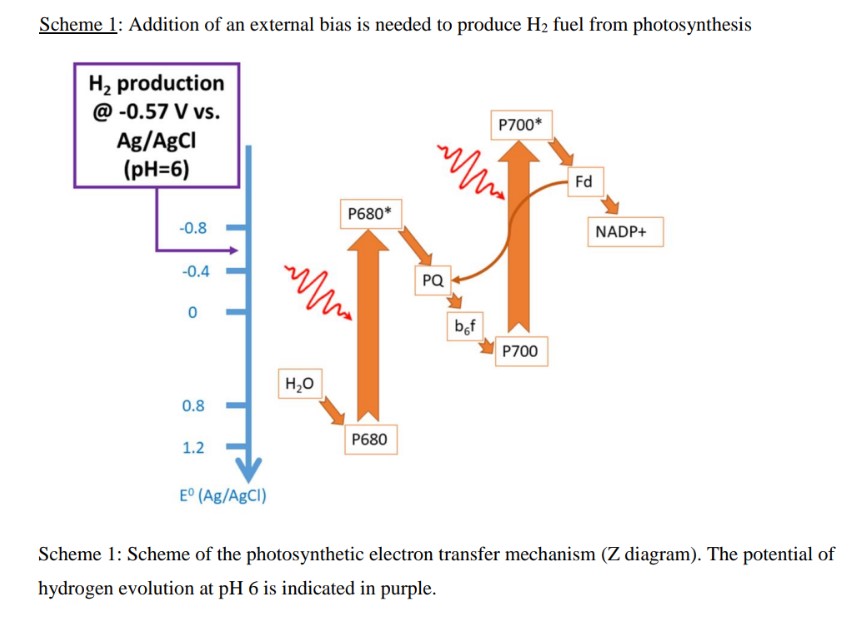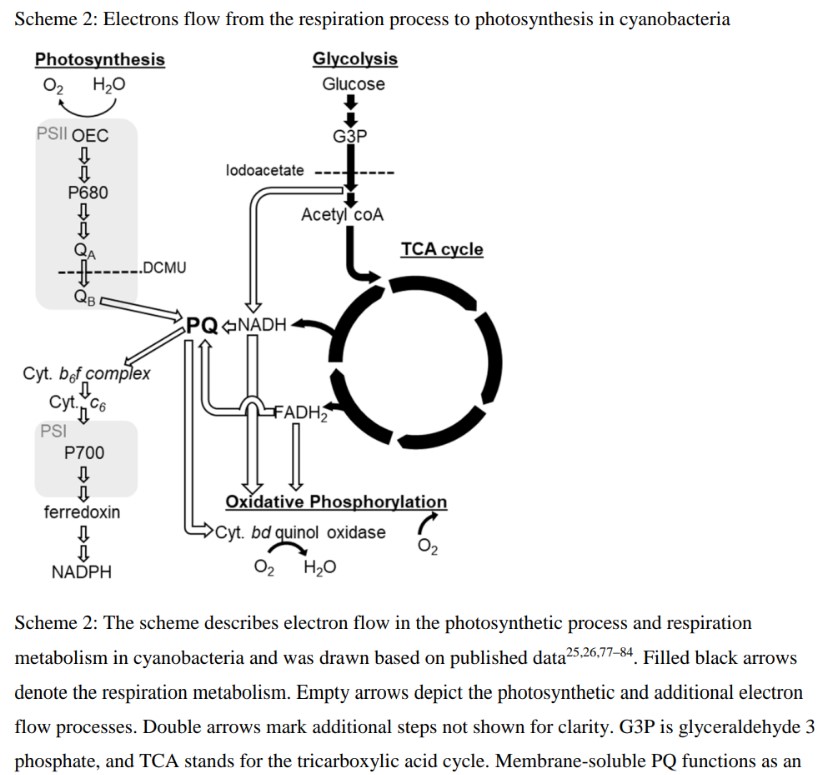
An Interview on tv about
Energy from Green Bacteria
Dr. Dan Kalman, from the Adir-Schuster-Rothschild research group, Technion Israel Institute of Technology.
Photocurrents from Photosynthesis: Exogenous and Endogenous Electron Transfer Mechanisms Using Spinach Thylakoids and Cyanobacteria
The photosynthetic process, conserved over 3.5 billion years of evolution, has shaped our atmosphere, our oceans and the entire biosphere. This thesis addresses bio-photo-electrochemical devices that exploit oxygenic photosynthesis from prokaryotic and eukaryotic sources. The main challenge in exploiting biological materials in electrochemical devices is related to the transfer of electrons between proteins and electrodes. Since, in most cases, no current is realized without intervention, electron transfer is instead achieved by a variety of approaches. In my research, electron mediation between spinach thylakoids and an FTO electrode was achieved through the use of an exogenous diffusive mediator. Although the ferricyanide mediator employed generates currents as high as 225 µA/cm2, the mediator itself damages the photo-activity of the spinach thylakoids. Another challenge overcome by the device developed in this study is the need for an external energy source for hydrogen evolution. By positioning a silicon-based photovoltaic cell under the transparent FTO anode, green and far-red photons produced the required energy for proton reduction in a stand-alone system in which no sacrificial electron donor, other than water, is added. An alternative path taken for hydrogen production in a stand-alone system relied on a water-soluble photosensitizer molecule, which not only absorbs photons and reduces low-potential electron acceptors but also acts as the exogenous diffusive mediator.
Surprisingly, when using live cyanobacterial cells in a bio-photo-electrochemical cell, photocurrents of 32 µA/cm2 were generated without addition of any exogenous mediator. A defined pre-treatment drove the cells to secrete a reduced small molecule with a redox potential of 50 mV (vs. Ag/AgCl). Such molecules were also able to reduce an external electron acceptor, such as cytochrome c. Endogenous mediator secretion was enhanced in the presence of the herbicide DCMU and is illumination-dependent. Although further analyses were performed to reveal the molecular structure of this mediator, it has yet to be definitively identified. For reasons described in the thesis, I hypothesize that it may be a flavin derivative.
The electron source in the cyanobacterial bio-photo-electrochemical cell was provided upon carbohydrate oxidation by the respiratory system of these live cells. The respiratory system shares the same plastoquinone pool with the photosynthetic process in this prokaryote, enabling electron transfer to photosystem I and from there, to the endogenous mediator. By adding an external bias, hydrogen gas was generated on the platinum wire cathode. Hydrogen production was enhanced when the enzyme H2 synthase catalyzed the cathodic reaction of proton reduction into H2 gas. More efficient electron transfer between the cyanobacterial cells and the electrode was obtained using an osmium polymer. Such wiring system did not increase the photo-current obtained from the cyanobacterial cells. Instead, fast electron mediation of the polymer drove the current to its maximum value faster than when a diffusive mediator alone was used.
In summary, when used in a bio-photo-electrochemical device, spinach thylakoids require external wiring that, however, also inhibits their activity. At the same time, cyanobacterial cells surprisingly auto-mediate their electrons, with these charges not being directly extracted as a result of water oxidation.





